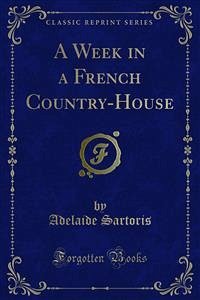The House Behind the Cedars is the first novel by American author Charles W. Chesnutt. It was published in 1900 by Houghton, Mifflin and Company. The story occurs in the southern American states of North and South Carolina a few years following the American Civil War. Rena Walden, a young woman of mixed white and black ancestry, leaves home to join her brother, who has migrated to a new city, where he lives as a white man. Following her brother's lead, Rena begins living as a white woman. The secret of her identity leads to conflict when she falls in love with a white aristocrat who learns the truth of her heredity. The ensuing drama emphasizes themes of interracial relations and depicted the intricacies of racial identity in the American south. The novel opens "a few years after the Civil War" with John Warwick, from Clarence, South Carolina, leaving a hotel in Patesville, North Carolina. He walks around the town in which he used to live, and tries to visit Judge Archibald Straight, but he is not in his office. Warwick's attention is captured by a striking young woman, who he does not recognize as Rena, and follows her to the house behind the cedars. Warwick cautiously approaches the house, worried about being seen, and is invited in by Molly Walden. He says that he has a message for Walden from her son, but she then realizes that Warwick is her son who she has not seen in years. Warwick joyfully reunites with his mother and his sister Rena, and tells them what his life has been like since leaving home. He reveals that he has become a successful lawyer, and that he was married, but his wife died and left him with a baby boy. Warwick asks Rena if she would come live with him and help take care of his son Albert. Molly is reluctant to send off her only daughter and Rena does not want to leave her mother alone, but John ultimately convinces his mother that Rena will have a better life with him. The next morning, Warwick visits Judge Straight, his mentor for whom he used to work as an office-boy under the name John Walden. Straight warns him not to stay in town for too long or else people may start to question his presence. He then contemplates that it would have been better for John to move further away from home than South Carolina "even though the laws were with him". Rena says goodbye to her mother and Frank Fowler, one of their workmen who is a close friend of the family and is deeply in love with Rena. She and her brother make the journey back to South Carolina, and John explains that Rena will take his last name. Read the complete novel for further story....
Bitte wählen Sie Ihr Anliegen aus.
Rechnungen
Retourenschein anfordern
Bestellstatus
Storno









